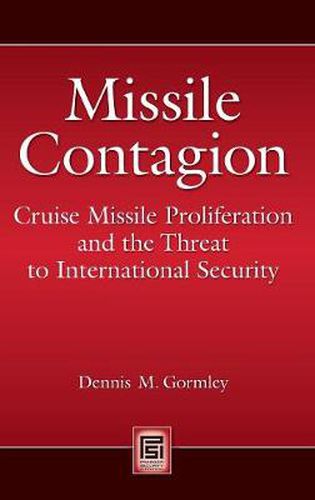Readings Newsletter
Become a Readings Member to make your shopping experience even easier.
Sign in or sign up for free!
You’re not far away from qualifying for FREE standard shipping within Australia
You’ve qualified for FREE standard shipping within Australia
The cart is loading…






Most books on missile proliferation focus on the spread of ballistic missiles or cruise missiles, not both. Gormley’s work, however, explains why cruise missiles are beginning to spread widely, but does so by explaining their spread in the context of ballistic missile proliferation. It therefore treats both ballistic and cruise missile proliferation as related phenomenon. This work also focuses evenhandedly on both nonproliferation and defense policy (including missile defenses and counterforce doctrines) to fashion a set of integrated strategies for dealing with ballistic and cruise missile proliferation.
Signs of missile contagion abound. In this study, Gormley argues that a series of rapid and surprising developments since 2005 suggest that the proliferation of missiles capable of delivering either weapons of mass destruction or highly accurate conventional payloads is approaching a critical threshold. The surprising fact is that land-attack cruise missiles, not ballistic missiles, constitute the primary problem. Flying under the radar, both literally and figuratively, land-attack cruise missiles add a dangerous new dimension to protecting U.S. security interests and preventing regional military instability. Gormley asserts that cruise missiles are not destined to supplant ballistic missiles; rather, they are likely to join them, because when both are employed together, they could severely test even the best missile defenses. Worse yet, Gormley argues, land-attack cruise missiles are increasingly being linked to preemptive strike doctrines, which are fueling regional arms races and crisis instability. This work explains why an epidemic of cruise missile proliferation, long forecasted by analysts, has only recently begun to occur. After first assessing the state of ballistic missile proliferation, Gormley explores the role of three factors in shaping the spread of cruise missiles. These include specialized knowledge needed for missile development; narrative messages about reasons for acquiring cruise missiles; and norms of state behavior about missile nonproliferation policy and defense doctrine. This book then addresses the policy adjustments needed to stanch the spread of cruise missiles in the first place, or, barring that, cope militarily with a more demanding missile threat consisting of both cruise and ballistic missiles.
$9.00 standard shipping within Australia
FREE standard shipping within Australia for orders over $100.00
Express & International shipping calculated at checkout
Most books on missile proliferation focus on the spread of ballistic missiles or cruise missiles, not both. Gormley’s work, however, explains why cruise missiles are beginning to spread widely, but does so by explaining their spread in the context of ballistic missile proliferation. It therefore treats both ballistic and cruise missile proliferation as related phenomenon. This work also focuses evenhandedly on both nonproliferation and defense policy (including missile defenses and counterforce doctrines) to fashion a set of integrated strategies for dealing with ballistic and cruise missile proliferation.
Signs of missile contagion abound. In this study, Gormley argues that a series of rapid and surprising developments since 2005 suggest that the proliferation of missiles capable of delivering either weapons of mass destruction or highly accurate conventional payloads is approaching a critical threshold. The surprising fact is that land-attack cruise missiles, not ballistic missiles, constitute the primary problem. Flying under the radar, both literally and figuratively, land-attack cruise missiles add a dangerous new dimension to protecting U.S. security interests and preventing regional military instability. Gormley asserts that cruise missiles are not destined to supplant ballistic missiles; rather, they are likely to join them, because when both are employed together, they could severely test even the best missile defenses. Worse yet, Gormley argues, land-attack cruise missiles are increasingly being linked to preemptive strike doctrines, which are fueling regional arms races and crisis instability. This work explains why an epidemic of cruise missile proliferation, long forecasted by analysts, has only recently begun to occur. After first assessing the state of ballistic missile proliferation, Gormley explores the role of three factors in shaping the spread of cruise missiles. These include specialized knowledge needed for missile development; narrative messages about reasons for acquiring cruise missiles; and norms of state behavior about missile nonproliferation policy and defense doctrine. This book then addresses the policy adjustments needed to stanch the spread of cruise missiles in the first place, or, barring that, cope militarily with a more demanding missile threat consisting of both cruise and ballistic missiles.